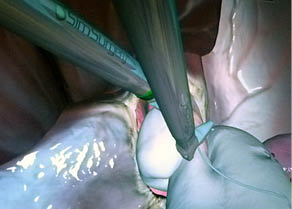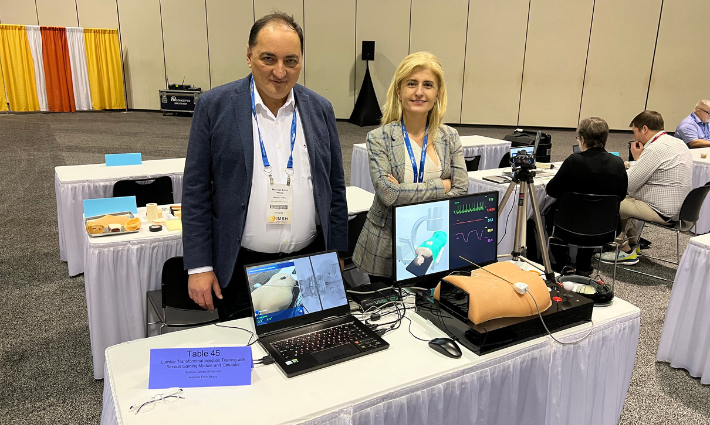Motion Tracking Research Studies
Polhemus set the gold standard in motion tracking and has continued to meet that standard and raise the bar for over 40 years. It's why we're the preferred choice for top researchers from around the globe. Below is a sample of research studies using various motion tracking products.
FreeD – A Freehand Digital Sculpting Tool
A Polhemus FASTRAK® was used for motion estimation in developing The FreeD, a hand-held, digitally controlled, milling device. The system is guided and monitored by a computer while preserving the maker’s freedom to sculpt and carve, and to manipulate the work in many creative ways. Relying on a predesigned 3D model, the computer gets into action only when the milling bit risks the object’s integrity, by slowing down the spindle’s speed or by drawing back the shaft, while the rest of the time it allows complete gestural freedom.
Correlation between Symphesis Pubis’ Opening and SIJ’s Opening During Open Book Injury
FASTRAK® was used to measure the relative positions and orientations of the sacrum, right and left ilia. Careful dissection was conducted in order to isolate the pelvic ring and to remove all excessive muscles beyond the L5 level while keeping intact the ligamentous structures that provide stability to the pelvic ring.Head Shape Research: Stylus
When used together with Polhemus digitizing hardware such as FASTRAK, LOCATOR allows to accurately measure an external head shape in three dimensions. This data may then be used for MRI coregistration. Electrode locations may be determined by touching with a stylus. Head movement is auto compensated with 1-3 head mounted sensors.
Kinematics Measurement of Snowboarder’s Ankles
FASTRAK, with four 6 degree-of-freedom position sensors, was converted into a fully portable system operating on two 12-volt batteries and connected to a laptop computer. The sensors were attached to the shanks and feet of a snowboarder.
Medical Speech – Essence of HandVoice2
FASTRAK, obtains poses of both arms and hands through electromagnetic tracking. The Super Glove, developed by Nissho Electronics Inc., acquires poses of finger joints and angles. HandVoice2 software from Nissho Electronics Corporation, Japan, converts sign language to voice on-line and allows someone who cannot speak to lead a more interactive social life. A keyboard and mouse are not used during conversation.
Research Navigation – Spatial Navigation
Movements are recorded with the Polhemus FASTRAK system using sensors on arms and legs, and are described using differential geometry descriptors such as curvature and torsion. These descriptions are then used by the movement learning system to recognize and analyze movement patterns.
Virtual Reality Interaction Toolbox
Head mounted display with the Polhemus FASTRAK system was employed to virtually steer a rocket propelled vehicle around the campus of the TU-limenau.
The Pelvis as Physical Centre in Virtual EnvironmentsThe VE’s are run on Chalmer’s Medialab’s five-wall, cave-type immersive 3D-Cube system, connected to a 14-processor SGI Onyx2 computer. For motion tracking in the 3D-Cube, a Polhemus electromagnetic tracking system, FASTRAK, with four sensors for placement on the body was used.
Development of a Virtual Laboratory for the Study of Complex Human Behavior
A go-kart mounted on a 6DOF motion platform provides kinesthetic feedback to subjects as they drive through a virtual town; dual-haptic interface consisting of two SensAble Phantom extended range devices allows free motion and realistic force – feedback within a 1m3 volume.


